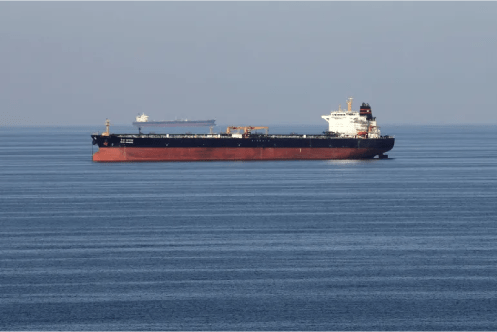Coal remains the dominant fuel for power generation in the United States and in many other countries as well. The Selection of boiler technology for coal firing plant is generally based on coal specification. Low sulphur Coals ( 0- 1.5 % ) will be required to avoid the boiler and air –heater corrosion. Low sulphur Coal is available in international market from USA, Australia, South Africa and Columbia. High Calorific value coals cause high flame temperature resulting in reduced efficiency, increased fire side corrosion, NOx production, higher risk of mill fires/explosion. Low CV coals impair flame stability, and affect coal throughput. Internationally traded low sulphur coals has a NCV ( Net calorific value) between 20 to 28 MJ/kg. The high moisture in coal associated with poor handling/flow properties. Lower limit associated with possibility of mil fires, and spontaneous combustion during stocking Coals with excessive fines very difficult to handle with low moisture contents. The required moisture contents shall be in between 5 to 15 %. Ash is another important factor to select boiler technology. Low ash proportion is desired to avoid high transport /disposal costs and higher rate of dust erosion. High ash concentration can induce flame instability and will increase deposits on boiler tubes thus will reduce heat transfer to working fluid. The Ash contents of the required Coal shall be between 0 to 18 %. The volatile matter % gives indication of coal ignitability and reactivity. Low volatile coals may need special plant to maintain flame stability and to achieve efficient burn-out. Same for high volatile coals ,which also increase risk of spontaneous combustion and mil explosions. The Volatiles in the required coal shall be 27.5 to 48 % ( dry Ash free ). If NOX emissions are an issue ,then limits may also be needed on fuel nitrogen as a function of volatiles as well as advance low NOx burner and SCR to be fitted with the boiler to comply the strict requirement of NOx. Grindability Index (HGI) measure work needed to crush coal and therefore, related to coal hardness and affect mill throughput. The high content of phosphorous ,Sulphur and chloride can cause boiler air-heater fouling and corrosion of boiler tubes which will increase the maintenance cycle of the plant.
Selection of boiler technology and unit configuration
In the electric generating coal fired thermal power plant, the boiler is the most important equipment as the primary unit that converts chemical energy of fuel into heat energy. The boiler technology is therefore a very important issue for effective and reliable operation of thermal power plant. Selected equipment should work reliably and ensure required performance based on given conditions. At present, coal fired boiler technologies in thermal power plants in the world as the following:
– Pulverized Coal Combustion technology (PC).
– Circulating Fluidized Bed Combustion technology (CFB).
– Pressurized Fluidized Bed Combustion technology (PFBC).
– Integrated Gasification Combined Cycle (IGCC).
In which, technologies of Pressurized Fluidized Bed Combustion and Integrated Gasification Combined Cycle have been newly developed with high economic performance factors. However, commercial experience of these technologies is still very limited, particularly developed based on high volatile content fuels, and requires a substantially higher initial investment cost. Therefore these technological configurations are not considered for Egypt Coal IPP project. In following sections, two main commercially available coal firing technologies:
Pulverized coal firing (PC) and circulating fluidized bed (CFB) will be studied for selecting the most suitable one for the project.
Criteria and Requirements for Boiler Technology of the Plant
Based on features of the project and characteristics of coal fuel as mentioned below in the table, criteria and requirements for selection of boiler technology for Egypt Coal IPP Project can be defined as below:
– It should be noted that Egypt Coal IPP will used Specified Coal with key features as mentioned in below table. Thus, boiler technology must be selected suitable for this coal type, particularly in terms of:
– Stable and reliable combustion process, especially at low load and/or sudden/ rapid load changes
– High complete burnt-out i.e. reducing unburned carbon in ash, in order to increase boiler’s efficiency
– Meeting with current, and possibly more stringent in future, requirement of environmental protections without a must of high complex and high costly treatment means.
– High fluctuation of coal quality range as mentioned in above table.
– The design technology must ensure safe, reliable, economic and easy operation and maintenance.
– Further, as noted above, environmental requirement is also an important factor to consider and select boiler technology. With this regard, economic factor should be considered in conjunction with technical matter.
Pulverized Coal Firing Technology
1. Introduction
Pulverized coal boiler is traditional technology and highly developed with almost complete design, high efficiency and high capacity.
At present, up to 1,300 MW capacity PC boiler is in commercial operation but the popular unit boiler capacity range is 3001,000 MW. Many boiler manufacturer can supply PC boiler of 660 MW. This kind of boiler technology is very suitable and popular for bituminous and sub- bituminous coal. PC boiler experience is also available with anthracite coal, however less popular than bituminous and sub-bituminous, and maximum boiler capacity is also less, around 600MW.
PC firing technology is normally categorized into two types: direct firing (without pulverized coal storage bin) and indirect firing (with pulverized coal storage bin). In which, indirect firing is mostly applied for anthracite coal as it facilitates more stable combustion process in boiler’s furnace thanks to feature of independent operation of coal milling system and coal firing system. Study and practical experiences have proven that with PC technology, only double arch (W-flame) or “down-shot firing” furnace can be effectively used with anthracite coal as it represents a good approach for meeting requirement of “long time burnout” – an outstanding feature of anthracite coal. Recently, World experience of PC boiler with W-flame design firing anthracite coal is mostly in China where boiler capacity is usually from 300 to 600MW. According to B&W Beijing information, Dongfang has delivered totally 37 boilers of 300MW and 16 boilers of 600MW, and B&W Beijing 19 & 20 respectively. B&W Beijing even claims that they have installed 600MW anthracite coal-fired supercritical boilers commercially operated from late 2009. However this information is not verified.
At present, largest PC boiler with W-flame design firing anthracite coal in operation is 660MW, at Hanfeng TPP, China. It should be noted that, even though PC boiler firing anthracite coal has rich experiences in China.
Advanced low NOx PC combustion system widely in use in utility and industrial boiler. The PC boiler is a cost effective and economical as it has size from 100 MW to 1300 MW.PC boiler has improved flame stability and higher combustion efficiency. Coal from anthracite to lignite can be burned through PC boiler.
Now a days most of the coal fired power plants use pulverized coal firing technology .The technology is proven and in use nearly from a century. PC firing- burning coal as a fine powder suspension in an open furnace. PC firing has made possible the large ,efficient supercritical boiler for power generation due to the much smaller size of coal particle up to 50 micron diameter which can be completely burn in approximately one to two second. All leading boiler manufacturer are supplying 660 MW supercritical PC boiler in the world market.
For Egypt IPP we are focusing on 2×660 MW or 3×660 MW units . For economic ,efficient and proven track record of boiler size we intend to apply PC technology .
CFB Technology Overview
Limited commercial capacity scale: recently, CFB boiler for power plant is available commercially at capacity of about 300MW only. This would lead to a configuration of the unit for 1200MW(4x300MW CFB boilers – 2x600MW steam turbine & generator) and for 1800 MW ( 6×300 MW CFB boilers – 3×600 MW steam turbine & generator). This causes the plant design more complex and, at certain level, rising of investment cost and needs comparatively larger land.
Possibility of less competitiveness: It is understood that traditionally, the market of power CFB boiler has been dominated by only two key players:
Alstom and Foster Wheeler. Though recently several Chinese manufacturers can supply up to 300MW CFB boilers which basically based on design developed by Alstom or FW, however conditions and limitation of licenses to Chinese manufacturers may be an issue affecting competitiveness of CFB boiler procurement
Following table summarizes key features of PC technology vs. CFB technology:
Comparison of key technical and commercial aspects among the two technologies
| No. | Item | CFB boiler | PC boiler |
| 1 | GeneralExperience of Design, Manufacture & O&M | New technology, not much experience as PC. At present, Alstom & Foster Wheeler have professional experience supplying CFB boiler worldwide. Some CFB are also designed, manufacturers and installed in China by Chinese’s itself. | Traditional technology highly developed; high availability and commercialization.Vast experience, especially for bituminous and sub- bituminous coal. Anthracite Coal can also be burned. |
| 2 | Land required | More land will be required due to more numbers of boiler, turbines &generator | Plant can be built in lesser space due to less number of units to reach the same output |
| 3 | Capacity scale of boiler | Manufacture and commercial operation of capacity boiler up to300 – 460MW.Larger capacity is under development | Commercial operation up to>1,000MW |
| 4 | Fuel quality | Flexible fuel with large range of specs. Appropriate with low heating value anthracite coal <4400 kcal/kg, high ash and sulphur content | Fuel quality is limited in narrow range. Appropriate with soft coal, low sulphur content. |
| 5 | Fuel preparation | Coal is crushed to suitable size that suits to CFB condition. Coal size is usually less than 6mm. | Pulverized coal consumes high power. Large and complex system.Coal size is usually less than100mm. |
| 6 | NOx emission | < 400mg/m3N. No need to use De- NOx equipment. | ≤ 400 mg/m3NOx can be met with advance low NOX burner and with SCR. |
| 7 | SOx emission | Lower, can achieve <150mg/m3N, thanks to emissions of SO2 can be controlled effectively within the combustor by addition of sorbent material ofLimestone.Without the need of FGD system installation. | Much higher, Therefore, FGD system must be installed. |
| 8 | Slagging possibility | Low, almost zero, due to furnace temperature < 9000C. | High, due to furnace temperature around 1,4500C. |
| 9 | Erosion in furnace& rear of boiler | Higher in the furnace but lower in the rear boiler. | Lower in furnace |
| 10 | Minimum output without oil support | ~30-45%, → more flexible | ~60-70%, not flexible |
| 11 | Boiler efficiency | Similar (with same coal) | Similar |
| Boiler auxiliary powerconsumption | Higher | Lower | |
| 12 | 1 Boiler 300MW | 85-90% | 100% |
| 2 Boiler 300MW | 170-180% | 200% | |
| 1 Boiler 600MW | – | 160% | |
| 14 | Operation and maintenance cost (incl. FGD & De- NOx) | Much higher due to high consumption of Lime stone | Lower |
| 15 | Time of construction and installation | Longer because of more complex design and less experience. | Shorter |
| 16 | Area required for main power plant | A bit larger | Base |







